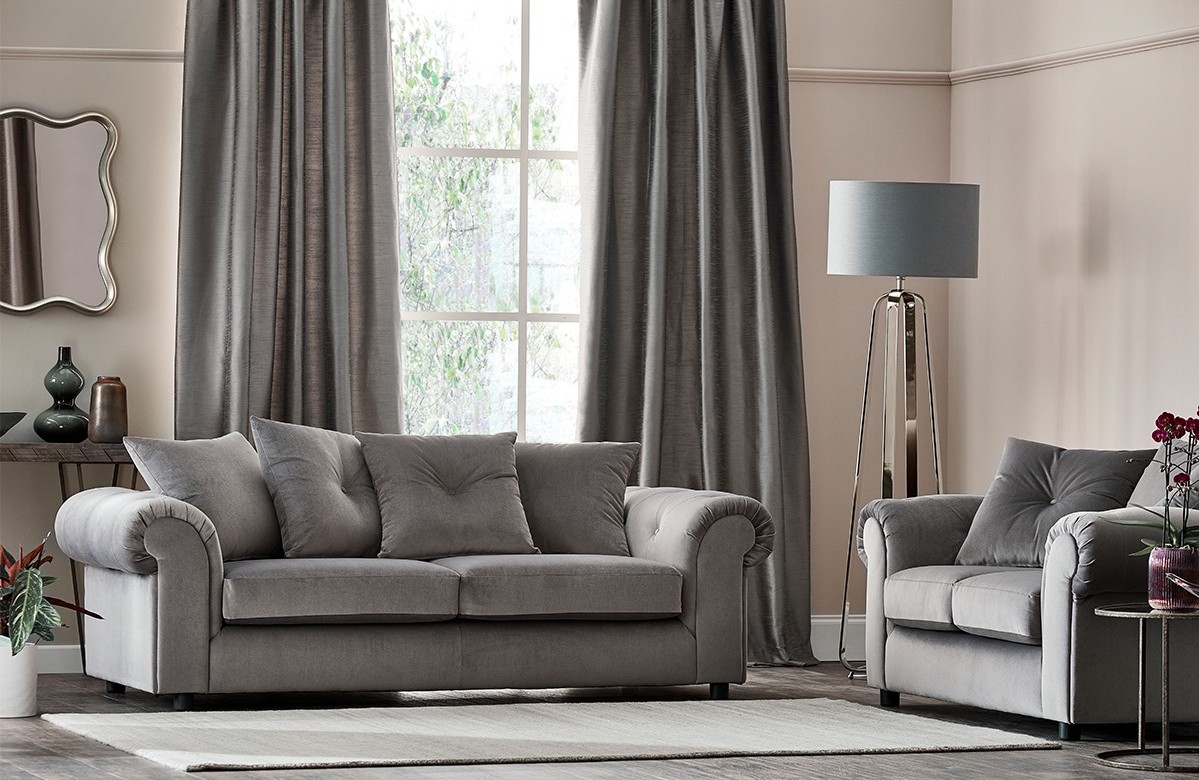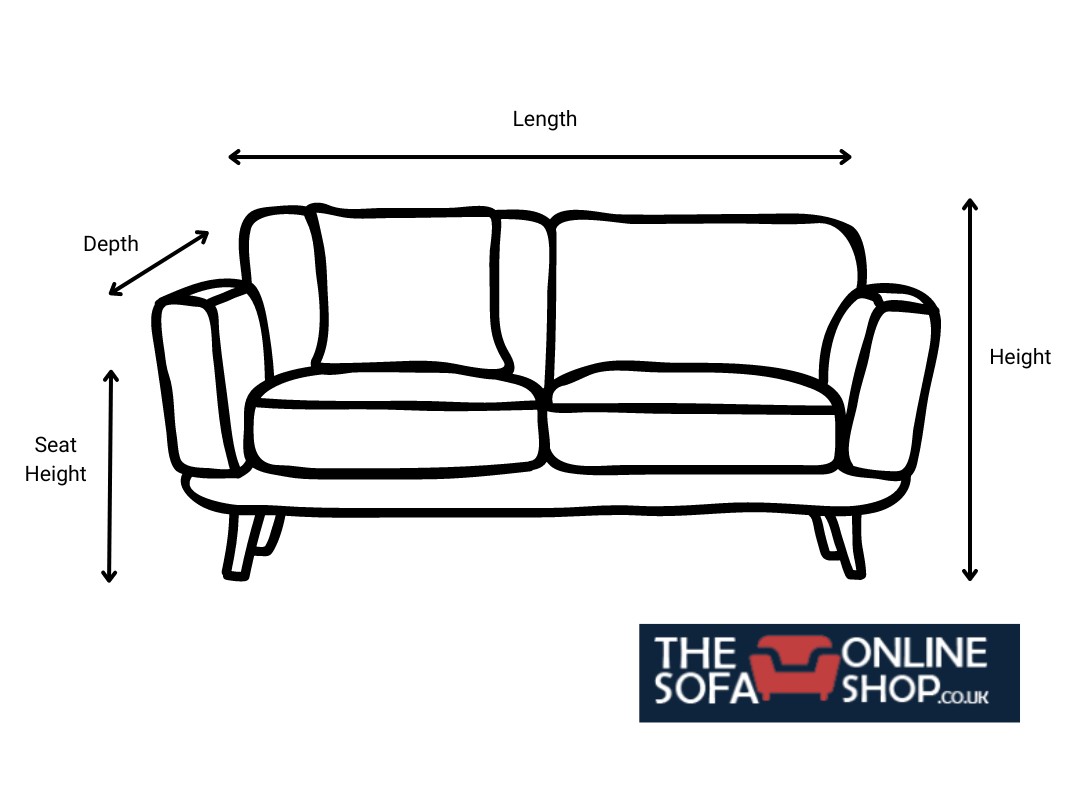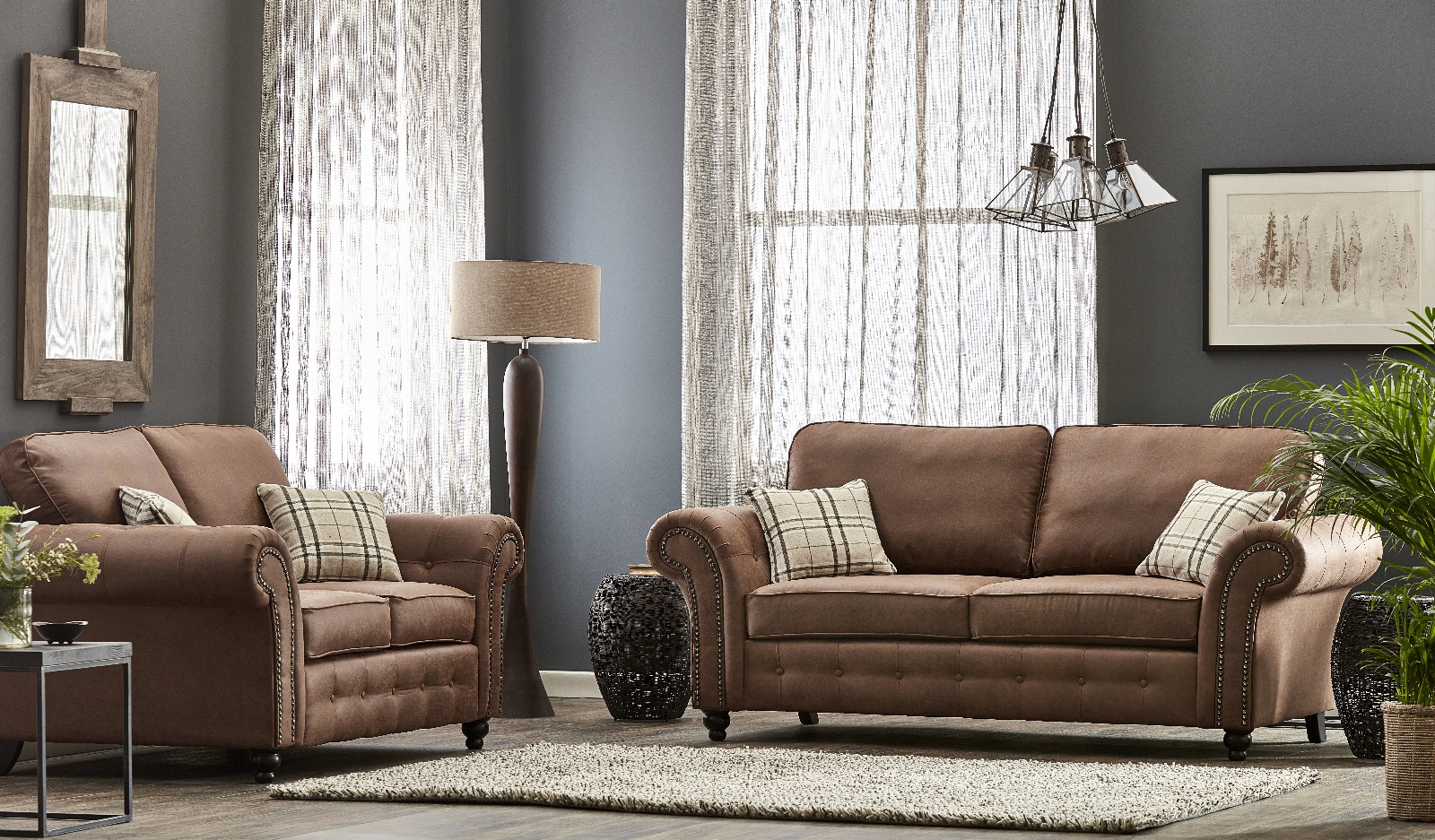Sofa measurement guide – What to consider before you buy
Posted by Jeanette Hudson on 12th Sep 2024

If you’re ready to buy a sofa, picking the right measurements to fit your space is essential. To avoid any costly mistakes when adding a new sofa to your home, keep reading this guide.
Below, we’ll cover common mistakes to avoid, how to measure a sofa, the room (including radiators and doors), and crucially, how to make sure the sofa will fit through your doors.
Which sofa dimensions should you take?
The first step in buying a new sofa should be measuring it to ensure it will fit into your home. The two key sofa dimensions to consider are:
- length
- depth
 The length and depth of your sofa are the most important if you want it to fit into your space properly. These dimensions directly affect how well the sofa will fit in your room and how much space it will take up, impacting both functionality and comfort.
The length and depth of your sofa are the most important if you want it to fit into your space properly. These dimensions directly affect how well the sofa will fit in your room and how much space it will take up, impacting both functionality and comfort.
Length
The length of the sofa is the measurement from one end to the other. This is especially important when positioning the sofa against a wall or between other furniture pieces.
For example, if you have an 8-foot wall, you need to ensure the sofa's length is less than 8 feet, ideally leaving some space on either side for side tables or floor lamps. A sofa that is too long can overwhelm the room, block pathways, or interfere with other furniture, while a sofa that is too short might not provide enough seating.
Depth
The depth of the sofa is the measurement from the front edge to the backrest. This affects how far the sofa will go into the room. If you have a narrow living room, a deep sofa may reduce the walking space and make the room feel cramped. Conversely, a sofa that is too shallow may not offer sufficient comfort, especially if you enjoy lounging or reclining.
For example, in a small apartment with limited space, you might have only 10 feet of width and 6 feet of depth to allocate for your sofa. In this case, a compact corner sofa with a length of around 6 feet and a depth of 30 inches would fit comfortably, leaving enough room to walk around and place a coffee table or other furniture.

In a large, open space, you may have the flexibility to choose a longer sofa, such as one that's 9 or 10 feet long. However, you still need to consider the depth. A deep sofa of 40 inches might work well in a spacious area where it won't obstruct traffic flow, providing ample seating and a comfortable, relaxed feel.
Seat height and depth are also worth considering because they impact sofa comfort. For example, sofas for older people should ideally be higher, and less deep. However, the most important sofa dimensions are length and depth.
Matching a sofa to your space
Any sofa should fit in with the space and existing aesthetic of your room. To make sure it does, you need to measure the space available and take into account other pieces of furniture, such as coffee tables, and bookshelves, and fixtures like doors and radiators.
Fixtures like doors can make a big difference when fitting a sofa into a space, and if not considered, can make a room feel very cluttered or more difficult to use.
Below you can see an example of an ideal living room layout. There is a two-seater sofa and armchair but sufficient space for the door to open, and for other furniture in the room which gives a balance of practicality and comfort.
If there was a permanent fixture in this room, for example, a radiator, the spacing of the room may have to change to make it feel more spacious and comfortable. Having a sofa directly in front of a radiator is also not advised as it can disrupt the heat distribution in the room, and potentially damage the sofa fabric.
In the example below there is a radiator included, so the room has been rearranged to allow for space near both the radiator and the door. This opens up a walkway and ensures the sofa isn’t blocking the radiator.
Taking measurements is just the first step when adding a new sofa to your home, you also need to consider how the sofa will work within the space. Thinking about these potential issues before you buy is strongly recommended.
Sofa measurement guide for delivery
Even if a sofa fits perfectly in your room, it’s useless if you can’t get it inside your house. To avoid this problem, you need to consider:
- The measurements of your front door
- Any other doors the sofa will need to pass through
- The size of your stairway
Make sure to compare the depth of the sofa with the width of any doorways or stairwells it needs to pass through. To ensure smooth entry, aim for a clearance of at least 4-6 inches (10-15 cm) beyond the sofa’s widest points when fitting it through a door. Measure the width, height, and diagonal depth of the sofa, including any protruding parts like arms or legs.
Remember that door frames, hallways, and tight angles can make moving the sofa more challenging. If the sofa is particularly bulky or has parts that can't be removed, you may need even more clearance.
Always double-check the measurements and anticipate any potential obstacles, allowing for extra space to make the process easier. If in doubt, check with the customer service department of the shop you’re buying from to clarify any questions.
Take your time and get it right
Ultimately, the sofa you choose and how and where you position it in your home is down to personal preference. However, our advice is to take the time to make sure the measurements of the new sofa fit into your space and enhance it. Remember to consider practicalities like delivery, other furniture, and fixtures like radiators.
If you’re still looking for the perfect sofa for your room, visit The Online Sofa Shop. We have a range of sofas that will fit every taste and budget and thousands of satisfied customers across the UK.
